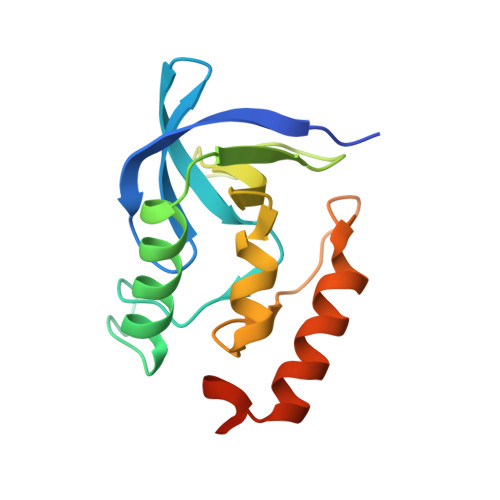Increasing the thermostability of staphylococcal nuclease: implications for the origin of protein thermostability.
Chen, J., Lu, Z., Sakon, J., Stites, W.E.(2000) J Mol Biol 303: 125-130
- PubMed: 11023780
- DOI: https://doi.org/10.1006/jmbi.2000.4140
- Primary Citation of Related Structures:
1EY0, 1EY4, 1EY5, 1EY6, 1EY7, 1EY8, 1EY9, 1EYA, 1EYC, 1EYD, 1EZ6, 1EZ8 - PubMed Abstract:
Seven hyper-stable multiple mutants have been constructed in staphylococcal nuclease by various combinations of eight different stabilizing single mutants. The stabilities of these multiple mutants determined by guanidine hydrochloride denaturation were 3.4 to 5.6 kcal/mol higher than that of the wild-type. Their thermal denaturation midpoint temperatures were 12.6 to 22.9 deg. C higher than that of the wild-type. These are among the greatest increases in protein stability and thermal denaturation midpoint temperature relative to the wild-type yet attained. There has been great interest in understanding how proteins found in thermophilic organisms are stabilized. One frequently cited theory is that the packing of hydrophobic side-chains is improved in the cores of proteins isolated from thermophiles when compared to proteins from mesophiles. The crystal structures of four single and five multiple stabilizing mutants of staphylococcal nuclease were solved to high resolution. No large overall structural change was found, with most changes localized around the sites of mutation. Rearrangements were observed in the packing of side-chains in the major hydrophobic core, although none of the mutations was in the core. It is surprising that detailed structural analysis showed that packing had improved, with the volume of the mutant protein's hydrophobic cores decreasing as protein stability increased. Further, the number of van der Waals interactions in the entire protein showed an experimentally significant increase correlated with increasing stability. These results indicate that optimization of packing follows as a natural consequence of increased protein thermostability and that good packing is not necessarily the proximate cause of high stability. Another popular theory is that thermostable proteins have more electrostatic and hydrogen bonding interactions and these are responsible for the high stabilities. The mutants here show that increased numbers of electrostatic and hydrogen bonding interactions are not obligatory for large increases in protein stability.
Organizational Affiliation:
Department of Chemistry and Biochemistry, University of Arkansas, Fayetteville, AR 72701-1201, USA.














